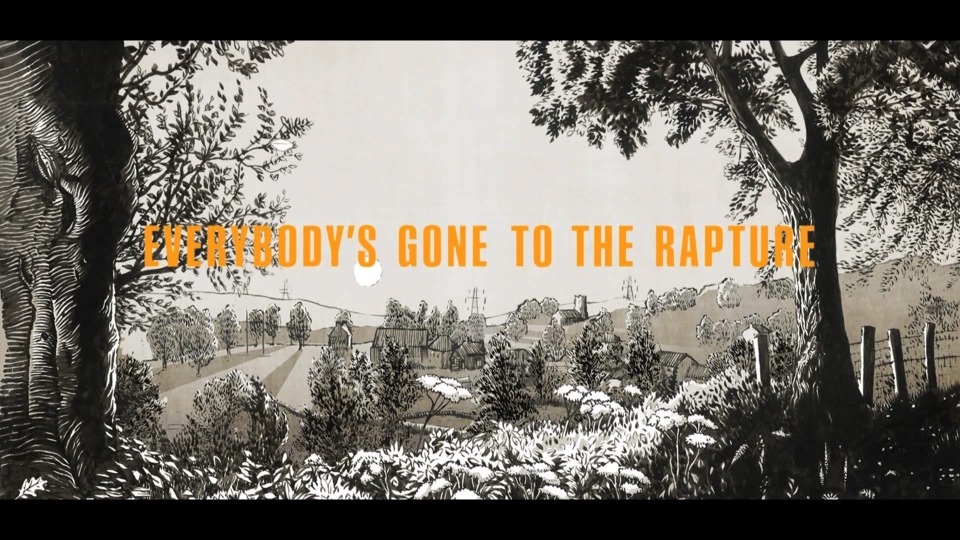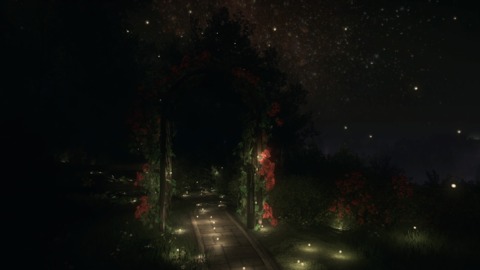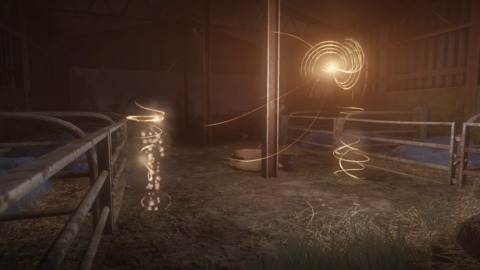Beautiful Apocalypse: Thoughts on Everybody’s Gone to the Rapture
By Darth_Navster 6 Comments

Everybody’s Gone to the Rapture is a game that really wants the player to like it. From the very start it seeks to steep you in its world. The game looks gorgeous, its presentation incredible, and its voice acting top notch. From start to finish, the developers at The Chinese Room display a confidence in what they wish to present, and for that I can’t help but applaud their efforts. But for all the work that clearly went into an incredibly polished final product, I could not shake the feeling of disappointment at how close the game comes to achieving greatness while still falling short. Let’s take a walk through the English countryside and break it all down.

The game starts you off on the outskirts of the fictional town of Yaughton. Though immediately charming with its lush fields and rustic architecture, all is not well. The populace seems to have disappeared quite recently, and throughout the town are orbs of light that play out vignettes of what they were up to in the days leading up to their disappearance. It quickly becomes apparent that the reason for the mass disappearance was due to the work of Stephen and Kate, a married couple and fellow astronomers who worked at the local observatory. The pair recently arrived in Yaughton, Stephen’s hometown, to continue their work. However, Stephen’s return has caused trouble with his family who don’t like Kate’s outsider status and wish he settled down with his old flame Lizzie. As the player further explores the town, they begin to see how the troubles of these people fit together with the coming cosmic rapture.
Given The Chinese Room’s legacy of popularizing the walking simulator genre with Dear Esther, it’s no surprise the Everybody’s Gone to the Rapture holds to a similar structure. Like their previous work, the characters are written with care and depth, and the cast does a phenomenal job in bringing conviction and emotion to the script. It’s even more impressive considering that the heavy lifting in bringing these characters to life relies on audio alone. Though the orbs animate the characters in broad strokes, detail is sparse and tough to follow visually. This is especially apparent in vignettes where characters are seated or otherwise not moving. That said, there are times when the animations sync up with the environment where it's worth watching the orbs as they move around, like when a knocked over paint can is revealed to be the result of a vignette.

For as successful as the game is in presenting its world and story, a lot of that work is undermined by game mechanics that don’t feel all that great. The game was roundly criticized at release for having a slow movement speed, and despite the developers adding in a speed up button the movement still feels plodding. I know I don’t move around at 100 km/h in real life like Doomguy would, but I know I can get through a wheat field faster than my player character in Everybody’s Gone to the Rapture. The sluggish nature of the game’s movement becomes even more apparent indoors, where the player’s speed is slowed down further and the speed up button is disabled. Whatever the developer’s intention in having such an unhurried pace, it only served to undermine the enjoyment I was getting from exploring Yaughton.
Unfortunately, the game’s flaws don’t end with the snail-like movement of the player character. Everybody’s Gone to the Rapture undermines its story by its very structure. There’s an orb that leads the player to various points of interest, but it ends up being quite difficult to follow at times. This resulted in me missing out on large chunks of story that were needed to fully understand the game’s climax and overall plot. Furthermore, the mechanic to activate vignettes remained obtuse and inconsistent throughout my playtime. Certain vignettes are activated by moving the Dualshock 4 around until you hit the right “frequency”, which in and of itself is a perfectly fine mechanic. However, other vignettes automatically played as I got in their vicinity, and yet others would not play at all for some reason. While I didn't necessarily need to see every bit of content to understand the story, having this strange and inconsistent method of doling out story beats proved to be incredibly frustrating.
I really wanted to like Everybody’s Gone to the Rapture. The Chinese Room had previously established themselves as one of the premier studios working in the vibrant walking simulator genre and I was excited to see them raise the bar yet again. Sadly, their latest release does not live up to Dear Esther’s legacy. That’s not to say the game is complete write-off; there’s still plenty of quality writing and beautiful countryside to wade through in its four hour run time. If that’s enough to pique your interest, then perhaps this beautiful apocalypse is one worth experiencing.